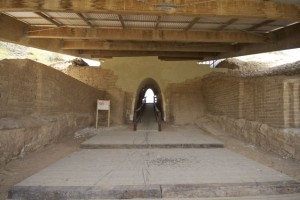Ashkelon. The summer of 1990. The sixth season of the Leon Levy Expedition, sponsored by the Harvard Semitic Museum. In the waning days of the season, on the outskirts of the Canaanite city, we excavated an exquisitely crafted statuette of a silver calf, a religious icon associated with the worship of El or Baal in Canaan and, later, with the Israelite God, Yahweh. The calf lay buried in the debris on the ancient rampart that had protected the city in the Middle Bronze Age (c. 2000–1550 B.C.).
The calf was housed in a pottery vessel in the shape of a miniature religious shrine, which itself had been placed in one of the storerooms of a sanctuary on the slope shortly before the destruction of the seaport in about 1550 B.C. The date is secure. Other pottery found in the sanctuary dates to the terminal phase of the Middle Bronze Age (MB IIC, c. 1600–1550 B.C.).
Read the rest of When Canaanites and Philistines Ruled Ashkelon in the online Biblical Archaeology Society Library.
